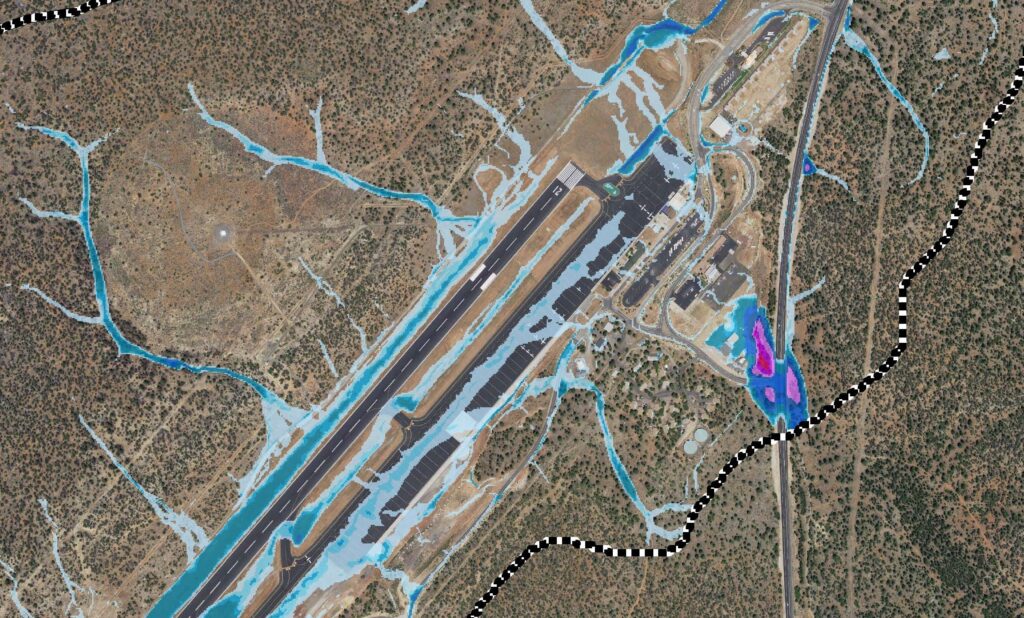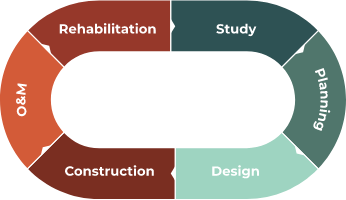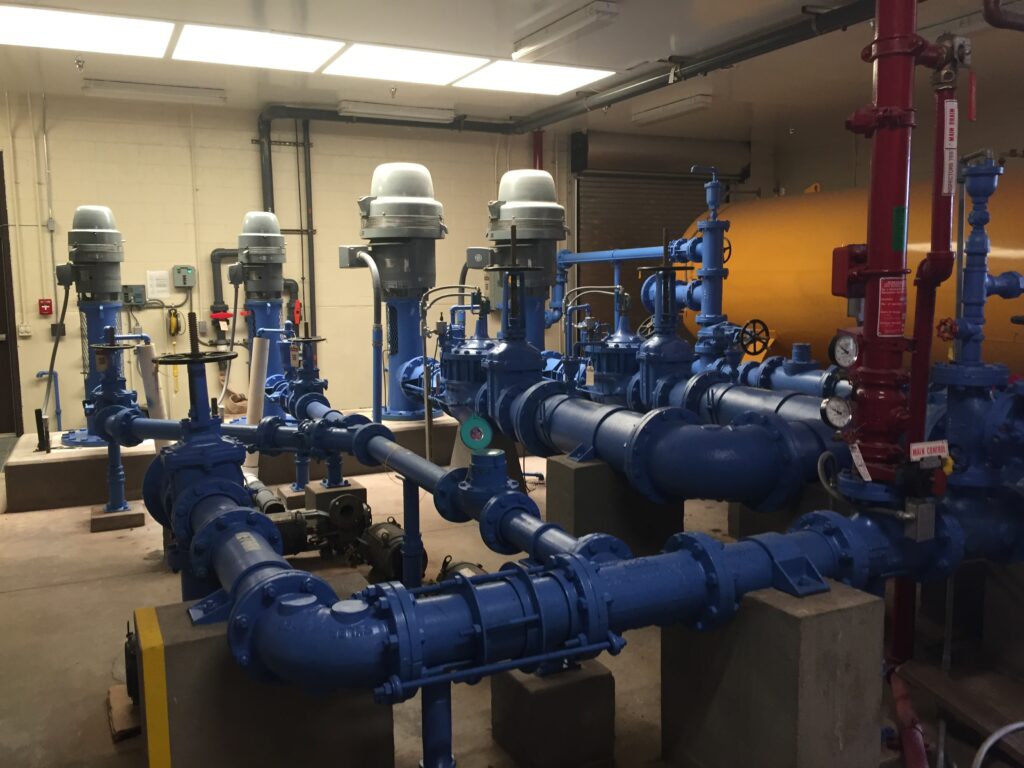Grand Canyon National Park Airport Drainage Master Plan and Water Use Study
Potable Water Transformed for Water Needs
Arizona is the Grand Canyon State, drawing tourists from around the world, and the Grand Canyon National Park Airport (Airport) is a key destination. New or expanded facilities are planned at the Airport, requiring solutions to existing drainage deficiencies and additional potable water. In 2019, Dibble completed a drainage master plan and water use study to address these challenges. The team comprised Dibble, Holistic Engineering & Land Management, Engineered with Leyton, Kaneen Communications, and SWCA Environmental.

When looking into how to provide additional potable to the Airport, ADOT staff wondered if a more sustainable solution was available than simply purchasing more limited groundwater from the local water utility. Could rainwater harvesting be the basis for the Airport’s water supply? Challenge accepted.
The Dibble team conducted deep-dive evaluations into the following:
- How much rainfall can be reasonably expected?
- How much stormwater runoff would be generated?
- Who has rights to the stormwater?
- Can the airport capture and store enough stormwater to meet its demands?
- Can the Airport treat it to drinking water standards?
- Is this the most cost-effective solution?
Details
Client
ADOT
Location
Grand Canyon, AZ
Scope
$490k
Awards/Recognition
ACEC Engineering Excellence 2020 Awards: Judges Choice, Best Small Project, Grand Award
Project Lifecycle


The team developed a two-dimensional watershed model to better understand its response to rainfall, a detailed statistic model of the local rainfall patterns, a thorough evaluation of the Airport’s drainage and potable water infrastructure, and a water rights adjudication to determine primary water rights. The team also recognized that water topics in Arizona are environmentally and culturally sensitive. To be inclusive and transparent, a Planning Advisory Committee was established, which included ADOT, local agencies, regional tribal nations, National Parks and U.S. Forest Service staff, and nonprofit environmental organizations.

The findings of the study indicated that it is feasible for the Airport to capture, store, and treat enough stormwater to meet its potable water needs. This solution is sustainable and cost-effective and achieved stakeholder buy-in!
This exciting project advanced the reputation of the engineering community as leaders in responsible management of limited natural resources.



